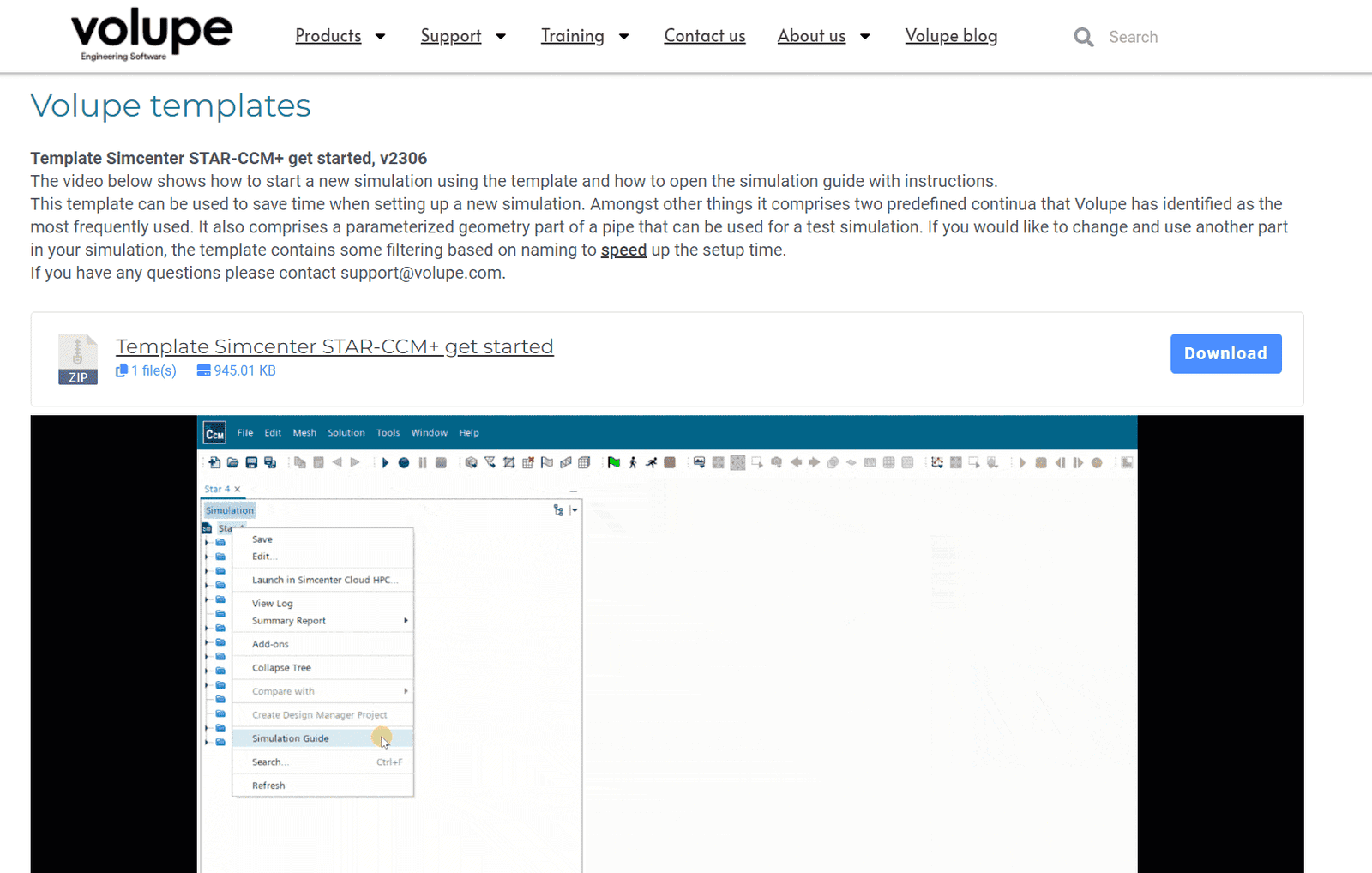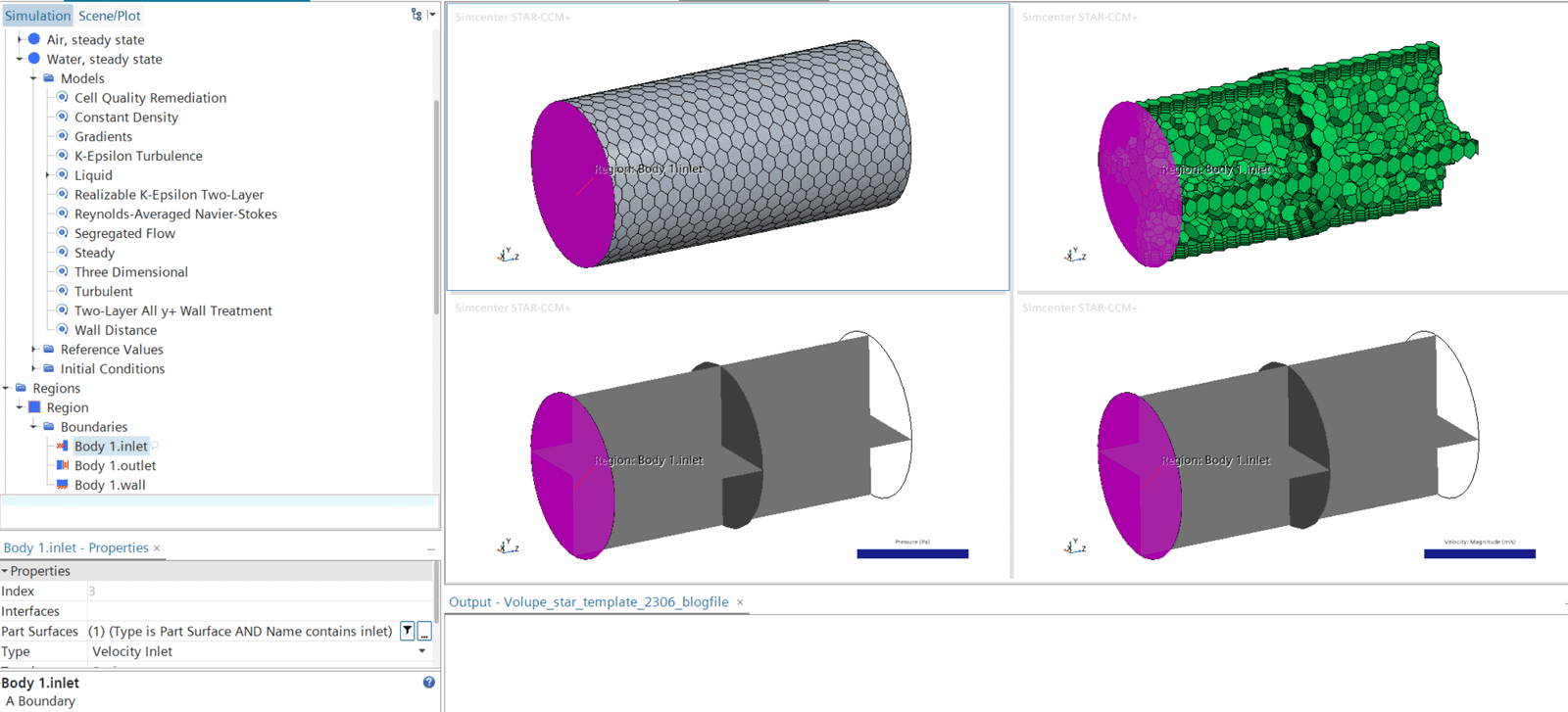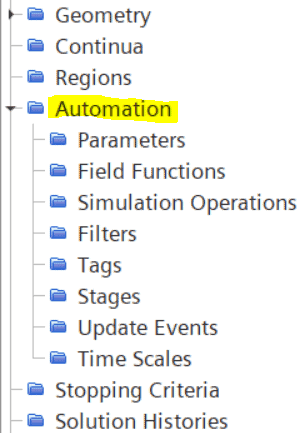In this week’s Volupe blog post we are happy to announce the Templates page at the Volupe webpage. The template page is the newest addition to our CFD handbook. The CFD handbook is available to everyone, and hopefully it helps you as a calculation engineer to both save time and use best practices provided by Siemens.
Templates are saved as .simt files, which basically are simulation files that are not possible to overwrite. Within the template, smart features like filters and parameters are used to automate the workflow, and establish a framework for generic settings. Features that are useful for templates are:
- Filters (filters and queries): logical expressions on which objects should be selected, updates the input at nodes automatically if settings are changed in the file.
- Parameters: changing all parameter values under one node, no need to repeat changes at several places in the tree structure.
- Tags: labeling (and grouping) of objects using colors.
- Simulation guide: a strong tool within a template – should always be loaded (like a README-file), instructions in text, hyperlinks to nodes in the simulation tree.
In the previous blog post, https://volupe.com/blog-volupe/upgrade-virtual-towing-tank-template/, about Siemens VTT template (a very useful template for marine simulations), you can see how to work with .simt files under the heading “New template format”.
Volupe templates
You will find Volupe templates via Support -> CFD Handbook -> Templates as seen in the picture below, or via the link https://volupe.com/blog-volupe/templates/.

We have previously announced a template for porous baffles, in the blog post
and now we have also added a template which you can use as a starting file for general simulations. The file is available for download from our Template page, as shown in the picture below, where you also find an instructive GIF to show how to open the Simulation guide. The simulation guide provides instructions on how to use the template.

The settings that are already set in the template file are:
- Design parameters for the generic geometry in 3D-CAD.
- Mesh operation with default settings according to Volupe’s suggestions (parallel meshing and more relevant values).
- Two continua, one for air and one for water – in steady state.
- Boundary conditions, based on naming of surfaces using filters.
- Derived parts for the Cartesian planes (planes and cell surfaces).
- Stopping criteria disabled.
- Pressure drop report with corresponding monitor and plot.
- Scenes for geometry, mesh and scalar fields (which are most commonly used).
This template will hopefully save you some time, and also prevents you from making simple errors in the set up. In the picture below you can see the generic geometry and plots that are created, together with the boundary conditions and how the parts are connected to the boundaries via filters.

Note: If you want to create your own template you can always start from this Volupe template and include/change settings that are relevant to your simulations, and then save it as another .simt file.
Automation
Templating falls into the category of automation, which is a great focus for development of Simcenter STAR-CCM+. Siemens always strives to make it easier for users to automate their workflow and save time in the setup of simulations. In the newest version of Simcenter STAR-CCM+, version 2310, a new node in the tree structure was introduced – the Automation node, see picture below for visualization.

Within the automation node you find some of the useful features for templating – such as Field functions and Simulation operations – along with other tools to customize and automate your simulations.
Simulation operations is a powerful tool since you have the possibility to change parameters and other settings, and you can also create loops over these settings to get an automated workflow. In simulation operations you can therefore change everything from settings at geometry level to mesh level to which physics is solved.
Another strong feature for automation is the new feature Stages. Here you can set different stages of the simulation and change between them, for example going from steady state to transient simulations. This feature will be discussed more in an upcoming Volupe blog post where the functionality will be covered in more detail.
Additional information regarding templating
When speaking of templates, we want to remind you about the Templating webinar we had a while back, you will find it at https://volupe.com/training/webinars/. It can also be helpful to see what type of settings are available for templates.

Last but not least, we at Volupe want to inform you that we have designed a training course for Workflow automation. In this training, templating is a large part of the training material and for the resulting workshop you create a template file of your own. Please visit our training site, https://volupe.com/events/automated-workflow-training-onsite-in-simcenter-star-ccm/, for more information and registration of the training.
Thank you for reading this Volupe blog, if there are any questions you are welcome to reach out to us at support@volupe.com.
Author

Christoffer Johansson, M.Sc.
support@volupe.com
+46764479945